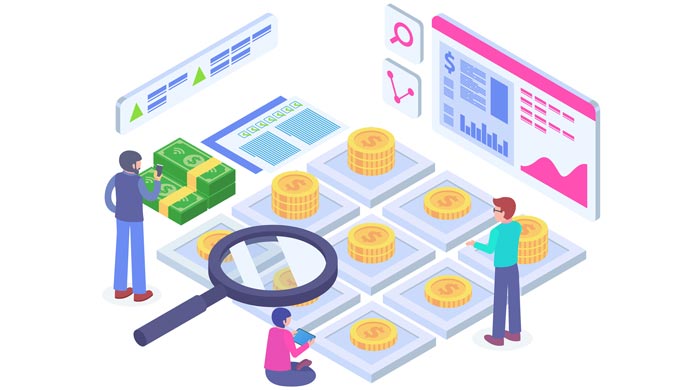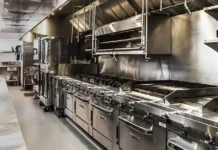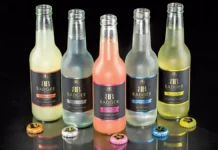
Article contributed by Wilson K Lee
Ninety-five percent of restaurants are vulnerable. Vulnerable to bankruptcy. Vulnerable to gross inefficiencies. Why? Because so many owners continue to wake up each day without knowing the actual health of their business. This pandemic has become a rude awakening for millions of business owners.
When you’re a little bit older, it’s recommended to get a health check-up each year just to make sure nothing is wrong. God forbid – imagine avoiding that suggestion and carrying on your day, only to find out too late that you have a fatal disease one day. A fatal disease that could have been cured if you did your regular check-up and went through treatment. The same thing goes for your business. You don’t want to be blindsided and find out you’re just about to trying to avoid bankruptcy at the very last moment. Your restaurant is your life’s work and it could disappear just like that.
That is why assessing your business health is critical. That way, you are aware of your financial situation and can make adjustments to prevent being in a MASSIVE hole. Trust me when I say that: not being on top of your finances is a major killer of small businesses.
So how exactly do you assess your business’ health? Here are 10 components to assess your restaurant’s business health:
1. Your Current Cash Balances
It’s important to know how much cash is in the bank. Your current cash balance is where you deploy all your resources. Whether that be buying inventory, paying staff or paying rent. As basic and simple as it is… a lot of people don’t know how much they have in their bank and that’s dangerous.
2. Track Your Account Receivables
Does someone still owe you money?
With how turbulent restaurant businesses are, it’s easy to lose track and rack up a large pending account receivables. You’d want to go out and start knocking on people’s doors who owe you money. It could be vendors, suppliers, or partners that owe you a ton of money. It’s the low hanging fruit that we can up our cash balances.
I get that you may have a tight relationship with them or you’re okay with them taking their time with paying you back, but do not be too relaxed with it. I’m sure you’ve heard of many horror stories about people running away with the money that I don’t need to throw at you.
3. Calculating Your Cash Flow
What is your cash flow looking like, if you’re keeping everything as is on a normal day?
Now let’s rewind back to the beginning of February 2020. The pandemic hits and say it sticks around for 3 months. 3 months where you’re forced to close dine-in part of your business.
How much would you need to budget and save up to survive those 3 months?
4. Knowing Your Cash Burn Rate
Cash burn rate is your total expenses on a monthly basis.
Even if you’re not in operations, you still need to pay for rent and you still need to pay for your accountant. All these things still needs to come into play to keep your business running. That’s your burn rate and minimum break even point.
Understanding your cash burn rate is super important because that becomes a huge milestone for you and your team.
5. Identify Your Variable and Fixed Expenses
For each business, there are expenses that you have control over and some that you don’t. That’s the case with variable and fixed expenses.
Fixed expenses are those that occur regardless of what happens. For instance, you need to pay for rent (the same amount each time) according to your contractual agreement. Whereas, with the cost of goods sold (COGS), the more meals you serve at your restaurant, the more ingredients you need to order for inventory.
Identifying your fixed and variable expenses lets you know what levers you can pull in your business and make improvements. Although you can’t make any adjustments to your fixed expense like rent, you can to the fixed monthly tech subscription software you’re signed up for. Or you can shave off labour costs by better management of staff scheduling.
6. Payment Deferrals & Terms
Since the restaurant business is run by insanely tight margins, understanding deferral programs and negotiating terms is key.
Deferrals are essentially payments that can be postponed for 30 days or even 90 days. These could be payments to your landlord, to your vendors or suppliers.
Without having these terms, without understanding the different payments that you can defer, it becomes very difficult for you to operate or grow. That’s because it allows you to take the extra cash flow to reinvest into your business. Or if you’re looking into trying to survive a recession, you can pinpoint which payments that you can pay later on and not have to stress right now.
7. Additional Funding
The number one thing that drives businesses to the ground and into bankruptcy is cashflow. Without cashflow and without that extra $10,000 that they need to stay afloat for just that extra month, all their life’s work goes down the drain.
So where can we get additional money from? This could be from:
- your line of credit,
- from your existing bank,
- your personal funding,
- your friends and family
- government grants and programs
Aside from knowing where we can get extra money, we want to know how much we can get. That way we understand the amount of cushion that we have if we are successful in obtaining the injection of funds.
8. Inefficient Assets
Some people love hoarding things. Some don’t. Regardless which camp you sit in, I bet there are assets and equipment in your restaurant that you can liquidate for cash. Assets that are not making you any money whatsoever.
For example, you might have a food truck just sitting in the back of your restaurant and you haven’t touched it for a year. Maybe it’s because it wasn’t as successful as you thought it would be or the extra cramped environment wasn’t your thing. Regardless, it is just sitting out there and can be liquidated so you can get your money to work for you.
Identify all the inefficiencies from your business, so then that way you can run a lean and machine that’s going to generate you cash all the time.
9. Personal Burn Rate
This is something that rarely anyone talks about. It is something business owners sort of just ignore because we try to separate our personal expenditures from the business as much as possible. But it isn’t that simple.
For most owners, their restaurant and food business is their whole livelihood. It helps put food on the table. So you’d want your “cash cow” to do the best right? It naturally is connected to your standard of living.
So when you identify your own monthly spending, you can assess where you could shave off and possibly funnel that extra money into your business when push comes to shove. Yes we still need a place to live. Yes we may still need a car to drive to work. Yes we still need to have our own luxury here and there. But certain decisions you make in your personal life could be put aside for your business and save in case for rainy times and develop a larger cushion.
10. Have An Ongoing Action Plan
At the end of every financial planner’s session – after taking stock of your situation – it’s then time to put things into action. Similarly, you’ve now taken stock of your current business health. You can imagine whether your business is in a dire situation (bankruptcy is just around the corner) or you’re in a spectacular place (you have a good cushion and can be out of business for 3 months). You’ve taken stock of your situation.
If you sit in the former camp, this is the time to build an action plan so you can step into that spectacular place.
Project in the next three months with all the vital signs that you have, how are you going to be able to come out above all this craziness?
- What is your current cash balances?
- How much cushion do you have?
- Who still owes you money?
- How much does it amount to?
- What is your cash flow right now?
- What is your cash burn rate?
- How much time left do you have if you do nothing?
- Identify all your variable and fixed expenses.
- What are the low hanging fruits you can change right now?
- What deferral programs are there?
- What can you defer right now?
- What additional funding sources are out there for you?
- How much can you get?
- List all the inefficient assets you have.
- What’s your personal burn rate?
This becomes your action plan to transform your business’ poor health. And in times of a global pandemic, assessing your business’ health is super important for you to be able to communicate with your partners, with your vendors, with your lenders, and most importantly, with the team that you have.
Whether they were laid off or whether the fact that you are going to hire them again, this gives them confidence and this becomes part of the transparent culture that you want to create.
When times are better, you need your core staff and you need that culture to be in place. And this, if done right and when executed right, gives them so much more confidence in your ability to lead them out of any darkness. Assessing your business’ health isn’t a one time thing. Older folks do it once a year. I would recommend you do the same.
For more small business and restaurant tips & strategies to help you grow, check out Wilson’s webiste at https://wilsonklee.com/

























